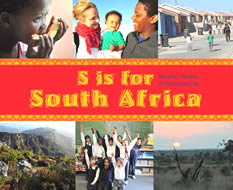Shawna Yang Ryan is the author of the new novel Green Island. She also has written the novel Water Ghosts, and her work has appeared in a variety of publications, including ZYZZYVA and The Asian American Literary Review. She lives in Honolulu.
Q: How did you come up with the idea for your main character
and her family, and why is she an unnamed narrator?
A: I struggled through multiple drafts with different
narrative voices. Ultimately, I narrowed down the time frame for the book, and
then it was easier to envision a character who could move through that time
period.
For a long time, I was set on having a more male-centric
book, but I found the father-daughter relationship very poignant, especially
from the POV of a woman yearning for a better relationship with her father.
I was so consumed inside her head, I didn’t feel that I
could go outside her and give her a name, some way that others identify her.
And then when the book was done, I’d known her so long this way that no name
seemed right. I also like the metaphorical resonances with being unnamed and
Taiwan’s own issues over naming.
Q: You write that you spent 14 years on this book. What was
involved in your writing and research process?
A: There were so many layers to this process. First of all,
I was certain that I needed to have some fluency in Mandarin! So that was one
very arduous, long-term layer as I learned to speak and read Mandarin.
Then I wanted to feel very comfortable in my knowledge of
Taiwan and its history. I moved there for a few years.
I believe that when you tell a story, you should tell it
with the certainty of a memory, and so I had to integrate this story so
intimately into my mind that it felt like my own memories before I could write
it. I think I need to find a more efficient technique so that the next book
doesn’t take as long!
Q: What are some of the most common perceptions and
misperceptions in the U.S. about Taiwan?
A: The most common misperception I hear is that Americans
believe Chiang Kai Shek was a noble hero. He was our ally, it’s true, but he
was just as corrupt as any dictator. For the U.S., it was either him or Mao, so
they chose him.
The other misconception is that Taiwan is a part of China. I
hope my book demonstrates why it is not—culturally, historically and legally.
Q: Did you know how the novel would end before you
started writing, or did you make many changes along the way?
A: I didn’t know how it would end, but I did know the last
line because it mirrors the first line. So I knew those two sentences would be
in conversation with each other. The more I wrote, the more I realized that the
story was just as much about the act of telling history as it was about the
family itself.
Q: What are you working on now?
A: I have a few projects. The central one is a novel about water
in California, where I grew up. I’m trying to resist the feeling that I should
learn Spanish for this project!
Right now, I’m trying to immerse myself in the history of
the water wars. It’s also been a great opportunity for me to learn more about
the geography and history of California, which I took for granted when I lived
there.
Along with that, I’m interested in the role people of color
played in the building of California, and how some people are thought of as
suitable for labor but not suitable to be citizens. Who gets to belong? Who do
we identify as “like us” and who is too “different” to be one of us? I want to
do this in a historical context, but these are still relevant questions today.
Q: Anything else we should know?
A: People looking for a fun and well-done political thriller
about Taiwan can check out the film Formosa Betrayed. I think of my book as the
feminist counterpart to that movie.
--Interview with Deborah Kalb







































